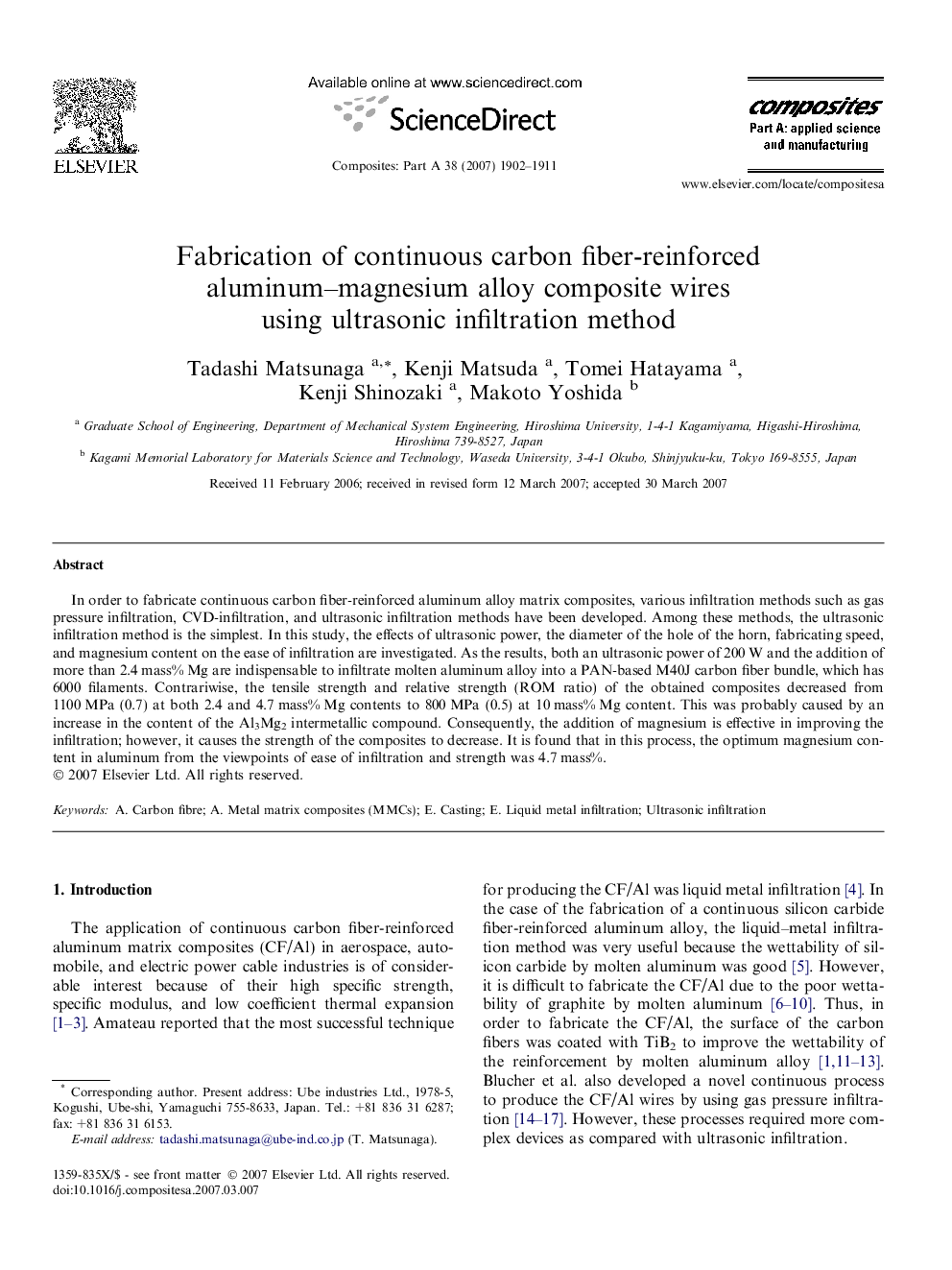| Article ID | Journal | Published Year | Pages | File Type |
|---|---|---|---|---|
| 1467515 | Composites Part A: Applied Science and Manufacturing | 2007 | 10 Pages |
In order to fabricate continuous carbon fiber-reinforced aluminum alloy matrix composites, various infiltration methods such as gas pressure infiltration, CVD-infiltration, and ultrasonic infiltration methods have been developed. Among these methods, the ultrasonic infiltration method is the simplest. In this study, the effects of ultrasonic power, the diameter of the hole of the horn, fabricating speed, and magnesium content on the ease of infiltration are investigated. As the results, both an ultrasonic power of 200 W and the addition of more than 2.4 mass% Mg are indispensable to infiltrate molten aluminum alloy into a PAN-based M40J carbon fiber bundle, which has 6000 filaments. Contrariwise, the tensile strength and relative strength (ROM ratio) of the obtained composites decreased from 1100 MPa (0.7) at both 2.4 and 4.7 mass% Mg contents to 800 MPa (0.5) at 10 mass% Mg content. This was probably caused by an increase in the content of the Al3Mg2 intermetallic compound. Consequently, the addition of magnesium is effective in improving the infiltration; however, it causes the strength of the composites to decrease. It is found that in this process, the optimum magnesium content in aluminum from the viewpoints of ease of infiltration and strength was 4.7 mass%.
